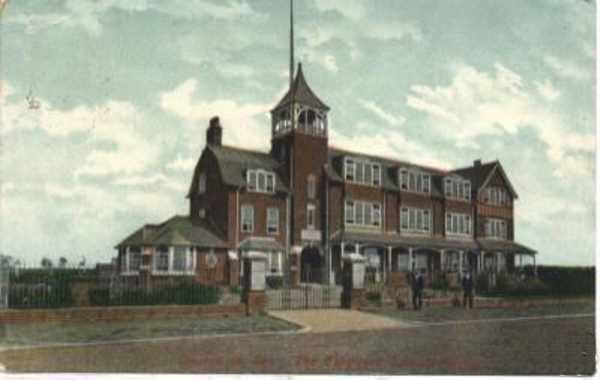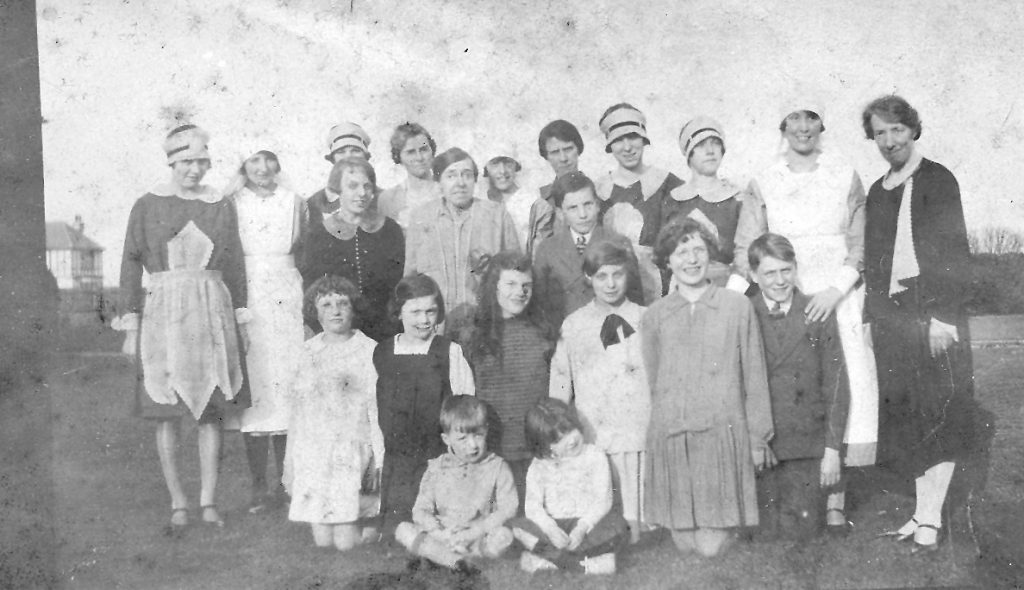Passmore Edwards provided £6,000 towards the total cost of £10,000 for this Sunday School Union home at Clacton on Sea.

History
“The home was opened on the 15 June 1899 by the Right Hon the Earl of Aberdeen. It was situated at the east end of the Marine Parade, Clacton on Sea. Standing in its own grounds of about one and three quarter acres, it commands a splendid view of the sea and of the country inland.” So began a short description of this Sunday School Union Children’s Holiday home published ca 1912.

the home in 1904 
the home in 1937
The total cost of the building including land (£1000), furniture and road making, fencing. legal, architectural, and other expenses, was nearly £10,000. Towards this sum Passmore Edwards contributed £6,000.

The description of the Home, which was included in an appeal for financial support, stated that “On the ground floor are to be found splendid dining and play rooms 90 feet by 25, with windows fronting the sea. On the first and second floors are the dormitories, divided into two distinct groups for boys and girls. The rooms are of ample dimensions and no effort has been spared to make them bright and healthful. They overlook the sea, are well lighted and ventilated, and furnished with a view to home suggestion and comfort.”

Children from the East End of London
“The cots are single ones, all of them bearing a brass plate inscribed with the name of the school or friend who has presented it to the Home”. “The playgrounds around the Home are spacious and have been fitted with swings and giant sstrides (sic). The Home accommodates over one hundred children, and is under the charge of Miss Jenkinson, the Matron, and is admirably managed.” The Home was open all the year round.

a girls bedroom 
staff and children
During WW2 the building was used as the headquarters for the Royal Artillery Ack Ack gun sites situated along the sea front, a situation that would not have been to Passmore Edwards liking considering his views on war. At the end of the war negotiations were commenced with the Essex County Council to purchase the home and these were completed by 1947/8 when the home finally closed and was reopened, in September 1950 for the treatment and convalescence of TB patients. By this time the National Health Service had been created and the Regional Hospital Board that acquired the building, spent £11,000 on the repairs necessary following its occupation by the troops during the war.
The National Christian Education Council, formerly the National Sunday School Union,opened the Children’s Convalescent Home, Broadlands, Broadstairs, in July 1948 following the closure of the home at Clacton on Sea.
As the scourge of TB was eliminated the need for the hospital at Clacton reduced and work began to convert the Passmore Edwards building once more, this time to provide a Rehabilitation Centre. By March 1960 the adaption of the building was complete and the first patients arrived in April 1961.

rest room 
a sitting room
Enid A Walsh, writing in the Essex Countryside Magazine in 1974 said that “This lovely house situated on the East Cliff with large lofty rooms, almost all overlooking the sea, built facing South proved a perfect choice”. An additional block of single storey buildings was constructed in 1964 for physio and occupational therapy. Under the directorship of Dr J B Millard and the rehabilitation Officer, Mr Maxwell Reid, 100 patients could be treated simultaneously. Patients were admitted when they no longer needed nursing care but would benefit from therapeutic treatment. A self contained unit existed where patients, disabled, perhaps from a stroke, could learn to care for themselves once more. 70% of the patients that left the Home were capable of returning to employment. Later a special unit was created to develop the supply of artificial limbs.

Patients 
The extended Centre
The Passmore Edwards Rehabilitation Centre finally closed in 1985 and the building demolished in 1986 to be replaced by residential flats known as Hestletine Court. Built in dark yellow brick with red metal work balconies the design was far from the inspirational architecture of the Passmore Edwards era. However, local old folk still refer to that point along the sea front as “Along by Passmore Edwards”.